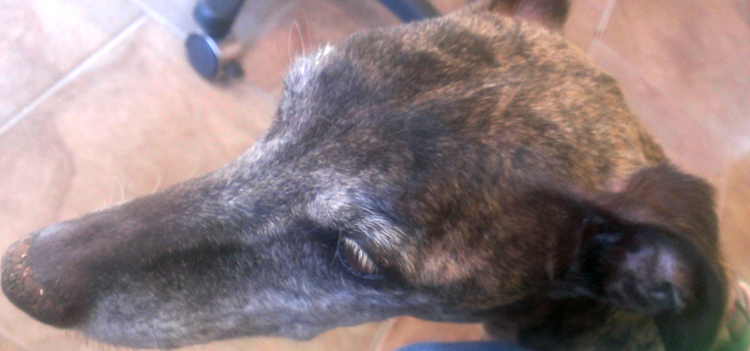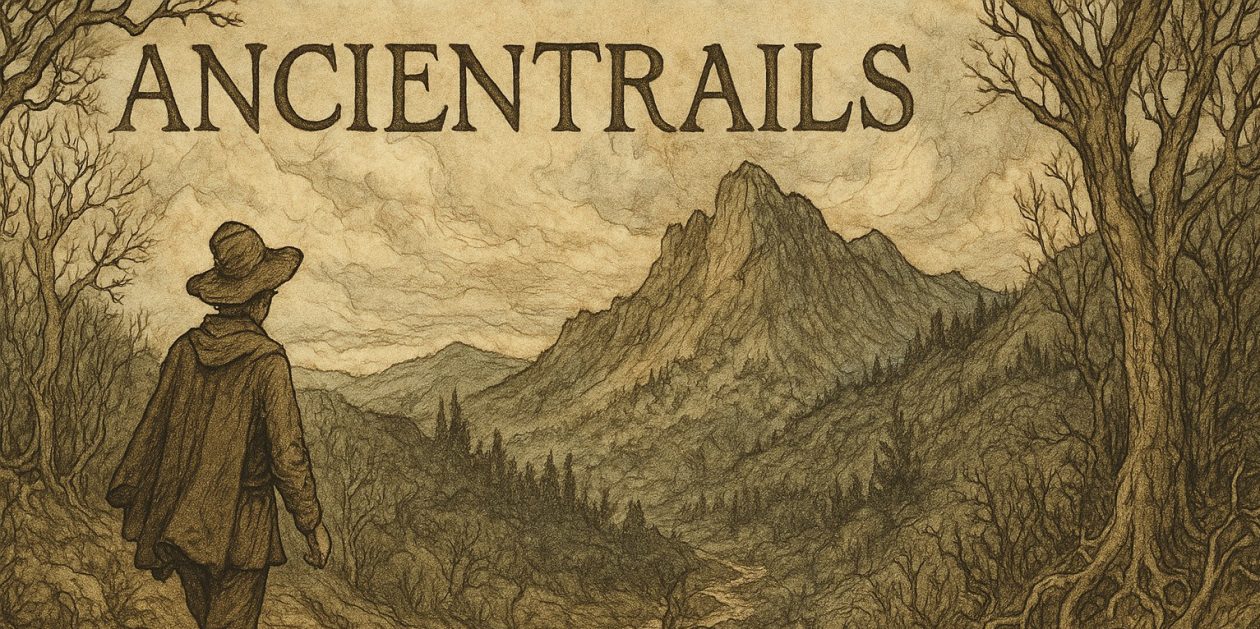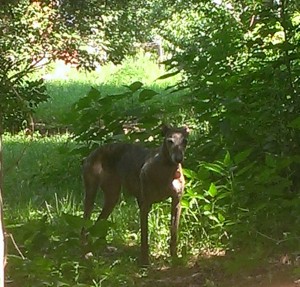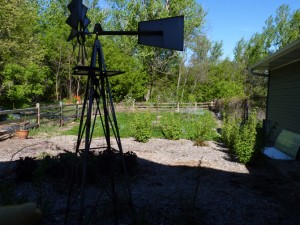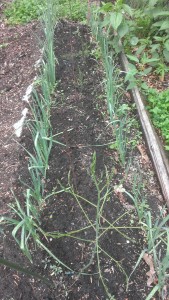Summer Moon of the First Harvests
Kona died this morning. Both Kate and I spent time with her just before she died. She 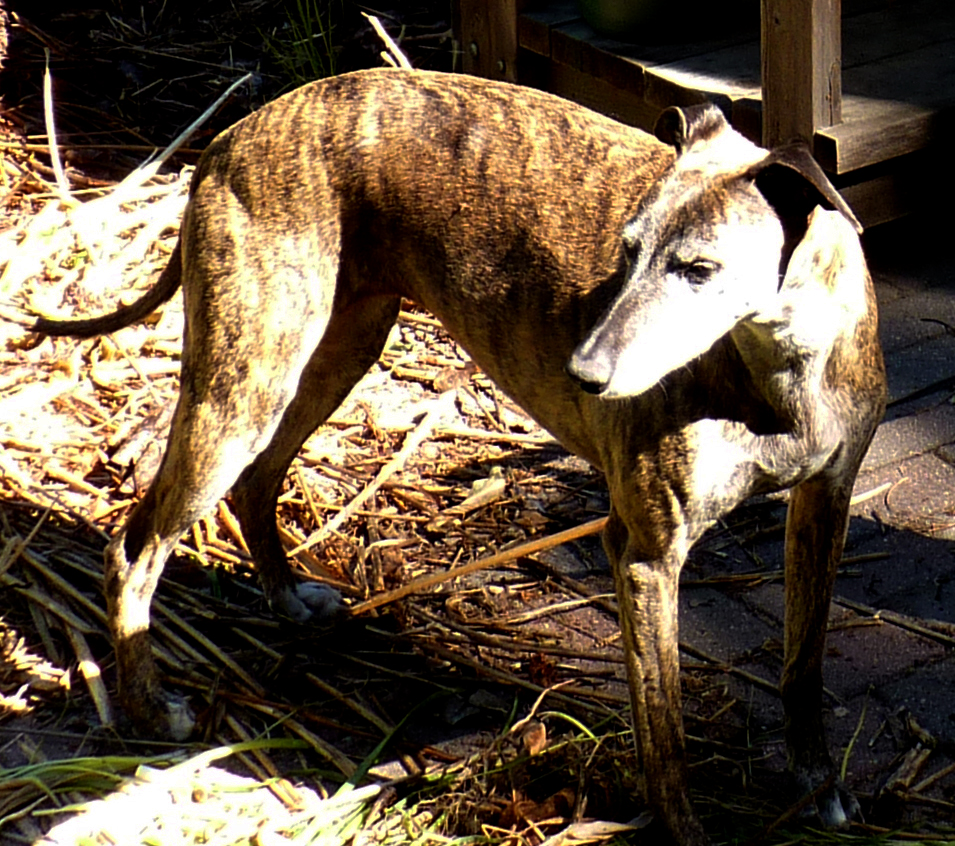 was alert and responsive to the end. She died knowing we loved her and in the crate she knew as her safe place.
was alert and responsive to the end. She died knowing we loved her and in the crate she knew as her safe place.
(Kona)
We cried, both of us. Yes, in spite of an end obvious long ago, the actual loss still opens a chasm between the living dog and the dead one. That chasm represents the never will agains. And those made me cry. I would never again feel her nuzzle into my hand. Never again see her smile. Never again see her run the trails in our woods.
Her corpse no longer retained her; it was a symbol now, not a reality. This is a wonder to me. When I spoke with her about a half hour before she died, she looked at me, put her nose in my palm, caressed me with her muzzle. Kona was 100% there. Then, she was gone. The light left her eyes and her body no longer moved.
The wonder is this, that life has a magic about it, seen most clearly after it is lost. That 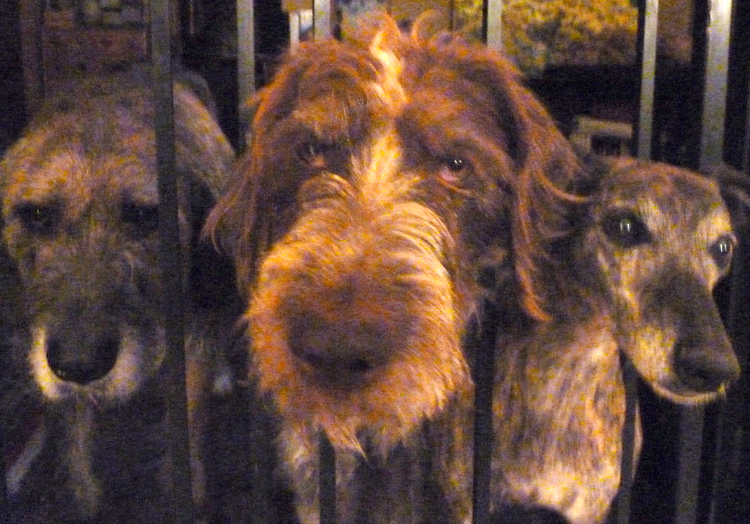 which was Kona was there, then not. Yes, her memories live on, that’s true. But Kona does not. The personality, the somewhat aloof I’m living life as I intend to personality of the sighthound, has vanished. Just like that.
which was Kona was there, then not. Yes, her memories live on, that’s true. But Kona does not. The personality, the somewhat aloof I’m living life as I intend to personality of the sighthound, has vanished. Just like that.
(Rigel, Gertie, Kona)
Life is a miracle, ordinary in its profusion and ordinary as long it exists, yet when it has gone, then we know. So, each death gives us a moment to reflect on the precious gift we have. The one carrying us forward into tomorrow. A gift others give to us, too. Each death is an opportunity to affirm and celebrate life and living.
Kona’s father was a whippet champion named Drum. When we picked up Hilo and Kona from the breeder, the puppies and the parents were watching Animal Planet. We brought them home and they began a series of escapes from the property, going under the chain link fence in pursuit of prey or delight, often both.
We held them on our laps when they were young. Hilo would squirm, sit up, stretch, jump down. Kona, the much larger of the two, would lie quietly, happy to be there. 
In her early days Kona was a predator. I remember one day Kona came up on the deck, dropped something there, then ran back out into the woods. The something was the still warm and clear eyed head of an adult rabbit. Why she brought it to the deck I don’t know. Over a long period Kona would kill rabbits and we would pick up the dead rabbits, put them in a plastic bag and dispose of them. This never deterred Kona. She just kept at it.
Hilo died three years ago of kidney failure and was never much of a hunter. She liked to be with her people. Kona kept to her self, finding places to sit nearby, sometimes with us, often not. She kept her own counsel and determined what her day would be like, pretty much independent of us.
After her death this morning, I went out into the garden and sat on one of the raised  beds. Gardens heal. Surrounded by life and life producing food, the cycle of life was concrete. Kona fit into this cycle. It helped me remember that at some point the light in my eyes will go out, too. And, more. That will be fine, it will fit into this cycle.
beds. Gardens heal. Surrounded by life and life producing food, the cycle of life was concrete. Kona fit into this cycle. It helped me remember that at some point the light in my eyes will go out, too. And, more. That will be fine, it will fit into this cycle.
(Vega and Kona)
Kona had privileges the other dogs didn’t. She would go with me into the garden, mainly because we could count on her not to dig holes in the garden beds. She would also be outside on our brick patio with us because we could count on her to stay around the house.
She has been part of our lives for 12 plus years, as real and regular a part of our lives as we are to each other. True she was a dog, but as a companion and fellow traveler on this pilgrimage she was with us, part of our pack as we were part of hers.
We travel on now with one less pilgrim immediately in our presence, yet at the same time, the whole pack with us, all 17 dogs, two parents and two sons. Amen.
